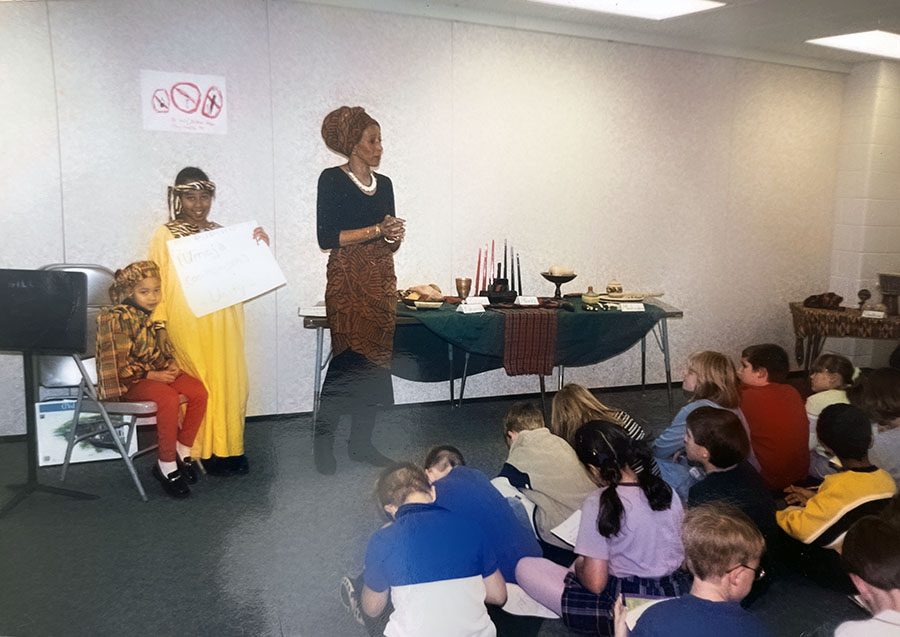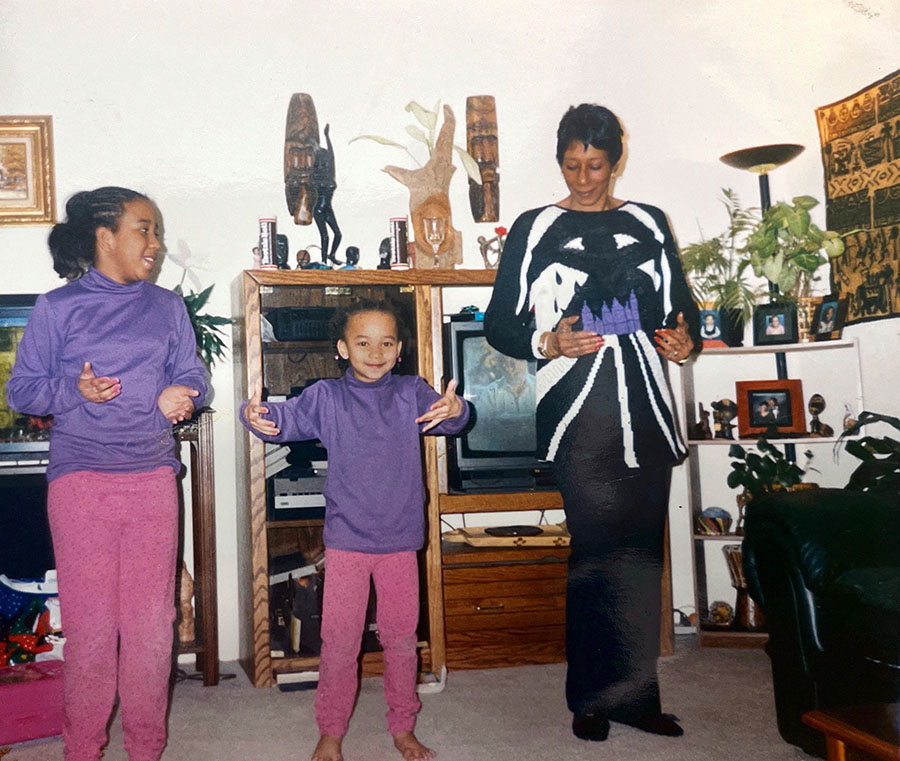By Naomi Johnson, Senior Associate
Habari Gani? This Swahili phrase for “What’s the news?” is the daily greeting used during the seven days of Kwanzaa – a weeklong celebration, from December 26 to January 1, of African American and Pan-African culture, community and heritage. My family has always stressed the importance of celebrating Kwanzaa as an annual family tradition. Whether we gathered around the black, red and green themed table, attended a community celebration, or shared our Kwanzaa celebrations with my fellow elementary school classmates, this time of year is always dedicated to honoring our ancestors while celebrating the present and sharing hopes for the future. As each day is dedicated to a new principle, which we will discuss later, Kwanzaa allows for deep reflection while reinforcing values that can be applied to our daily lives.
My earliest memory of Kwanzaa was in my third-grade classroom. My teacher invited my family to give a Kwanzaa presentation, and I was very excited (although you can’t tell by my facial expression in the photo below). In front of my friends and classmates, my mom, sister and I shared our family’s tradition and what this holiday meant to us and our entire community. We dressed in our traditional African garb and set up the table with decorations and symbolic items that reflected the important elements of our culture.

As an adult, I still celebrate Kwanzaa each year, but these celebrations look slightly different from my childhood. With family spread across the U.S., finding time to celebrate together is difficult. Instead of gathering around the table with close family and friends, I now attend community events. While family is a significant part of the Kwanzaa celebration, the meaning of family goes far beyond bloodlines in the Black community – the entire community is viewed as one big family.
The Beginning of Kwanzaa
Kwanzaa was created in 1966 by a Black cultural nationalist and Africana studies professor Maulana Ron Karenga, Ph.D., as a way to celebrate African American history, values, family, community and culture. Dr. Karenga saw a need for Black Americans to reaffirm their African roots and strengthen their bond during a time of racial unrest, which remains an ongoing struggle to this day. He used Swahili terms to express the ideas and concepts for Kwanzaa, including the following Seven Principles, also known as Nguzo Saba:
- Umoja (Unity): To strive for and to maintain unity in the family, community, nation and race
- Kujichagulia (Self-Determination): To define and name ourselves, and to create and speak for ourselves
- Ujima (Collective Work and Responsibility): To build and maintain our community together
- Ujamaa (Cooperative Economics): To build and maintain our own stores, shops and businesses
- Nia (Purpose): To make our collective vocation the building and developing of our community in order to restore our people to their traditional greatness
- Kuumba (Creativity): To always do as much as we can to leave our community more beautiful and beneficial than we inherited it
- Imani (Faith): To believe with all our hearts in our people and the righteousness and victory of our struggle
Each of the seven days has a special meaning and the application of the Principles can enrich our daily lives, any time of the year.
How to Celebrate Kwanzaa
At this point, you’re probably wondering what a Kwanza celebration may look like. Imagine walking into a room and instantly seeing a table filled with beautiful harvest colors. In the middle of the table is a candle holder, also known as the Kinara, which holds seven candles — three green, three red and one black.
Surrounding the Kinara are African baskets, cloth patterns and harvest symbols like Muhindi (corn) and the Kikombe cha Umoja (unity cup). On the first night (Umoja), we light the black candle. And on subsequent nights, we light the black candle first and use it to light an additional candle each day, alternating between green and red. We then pass around the Kikombe cha Umoja, give thanks by taking a sip and discuss the specific principle of that day.
Celebrations may also include gifts, a feast (Karamu) on the sixth day, music, poetry, instruments and dancing (as you can see in the photo below as we practice one of our traditional African dances). The celebrations commence on January 1 with a day dedicated to reflection and recommitment to The Seven Principles.


Did I mention that each year has a different theme? This year’s theme is “Kwanzaa, Culture and the Practice of Freedom: A Message and Model for Our Times.”
Local Celebrations in the Detroit Region
If you or someone you know is interested in celebrating Kwanzaa this year, there are plenty of celebrations around the Detroit region to attend. Check out the Charles H. Wright Museum of African American History for their annual celebration, attend The Black Legacy Coalition’s 7 days of Kwanzaa events or head to Southwest Gardens of Campus Martius for their first Celebration and Kinara Lighting, including the world’s largest Kwanzaa Kinara. Kwanzaa is a celebration and people from every ethnicity are welcome to join with their family and friends to learn more and celebrate the people within the community.

